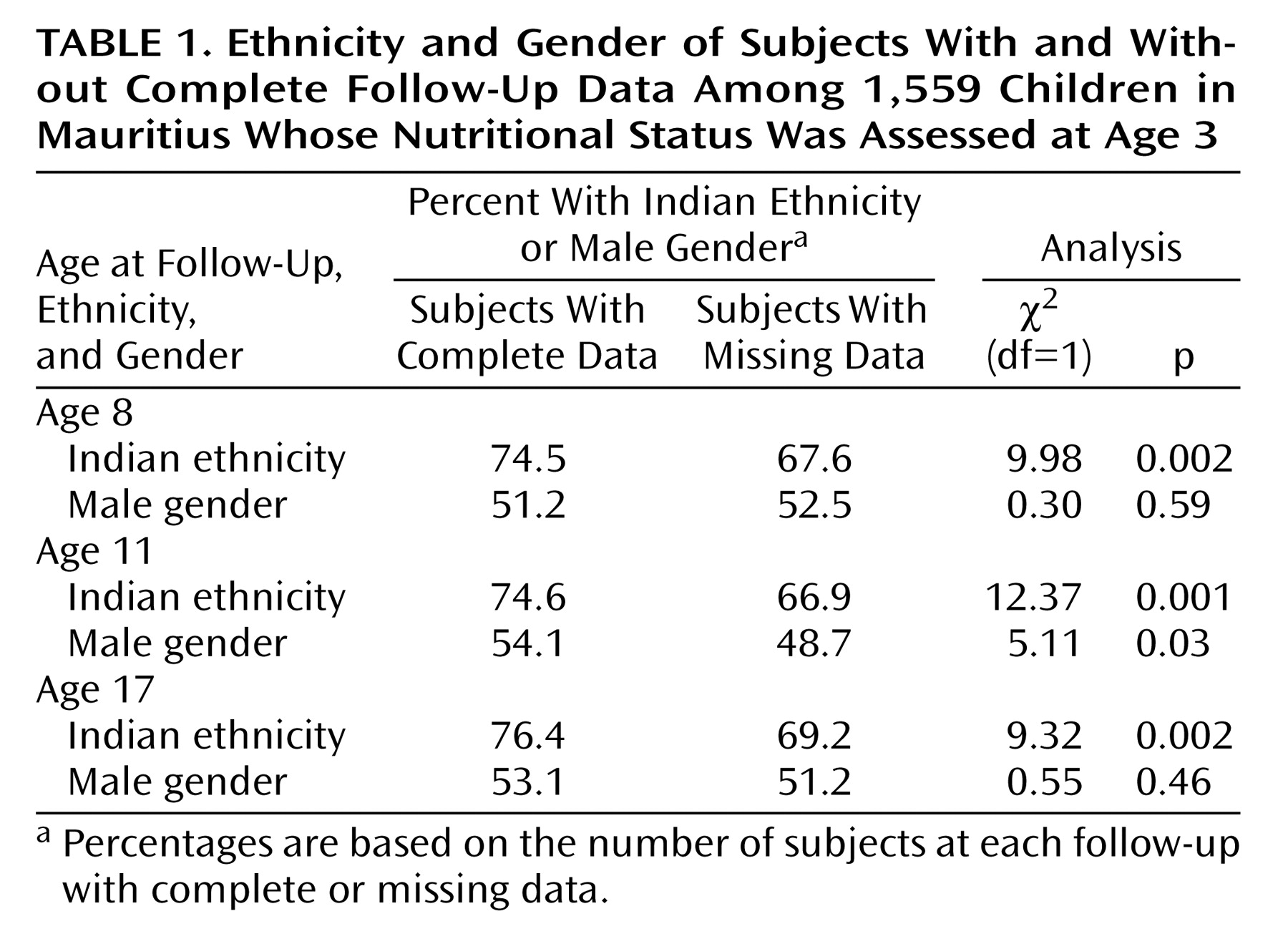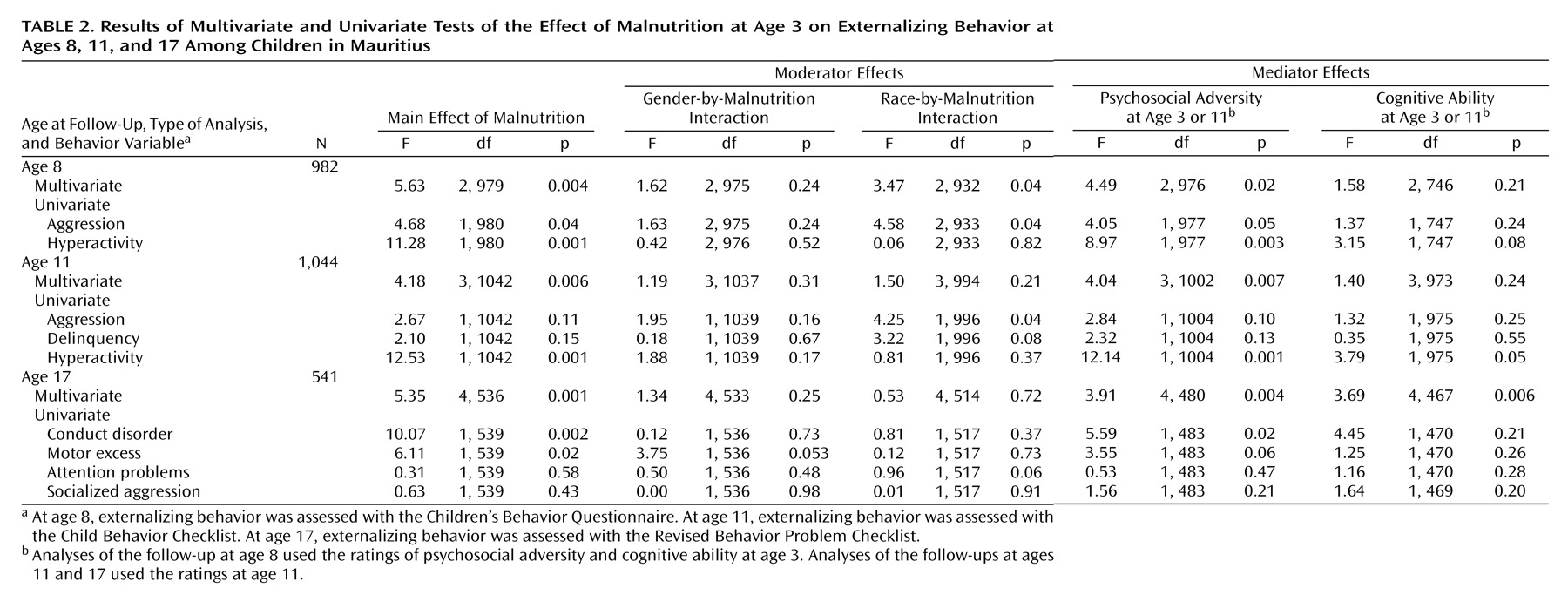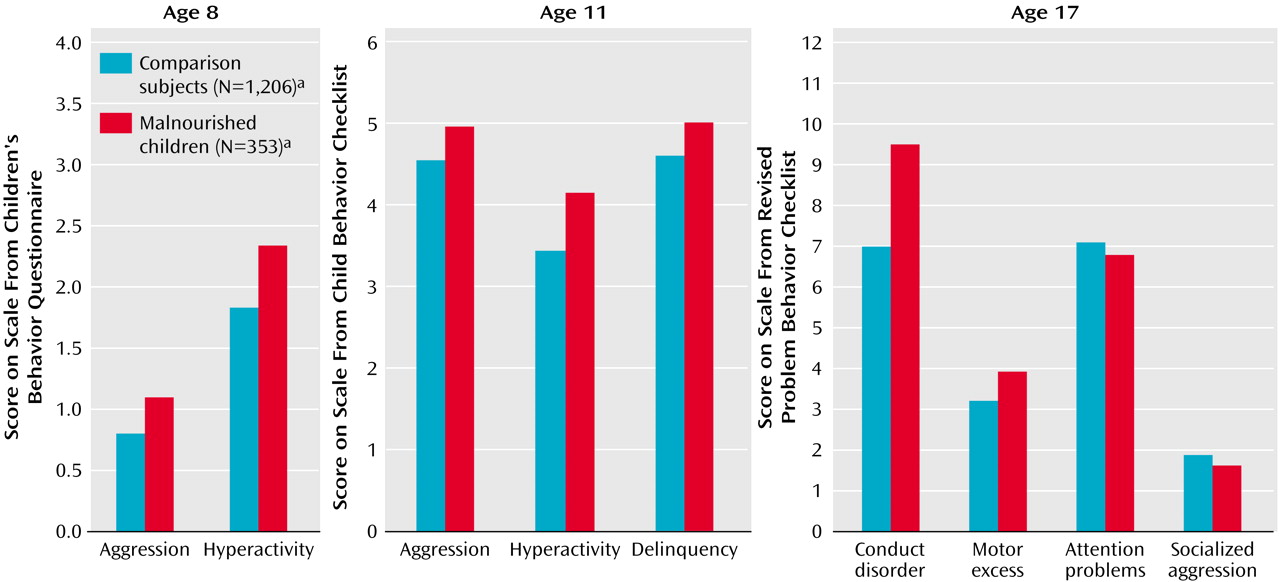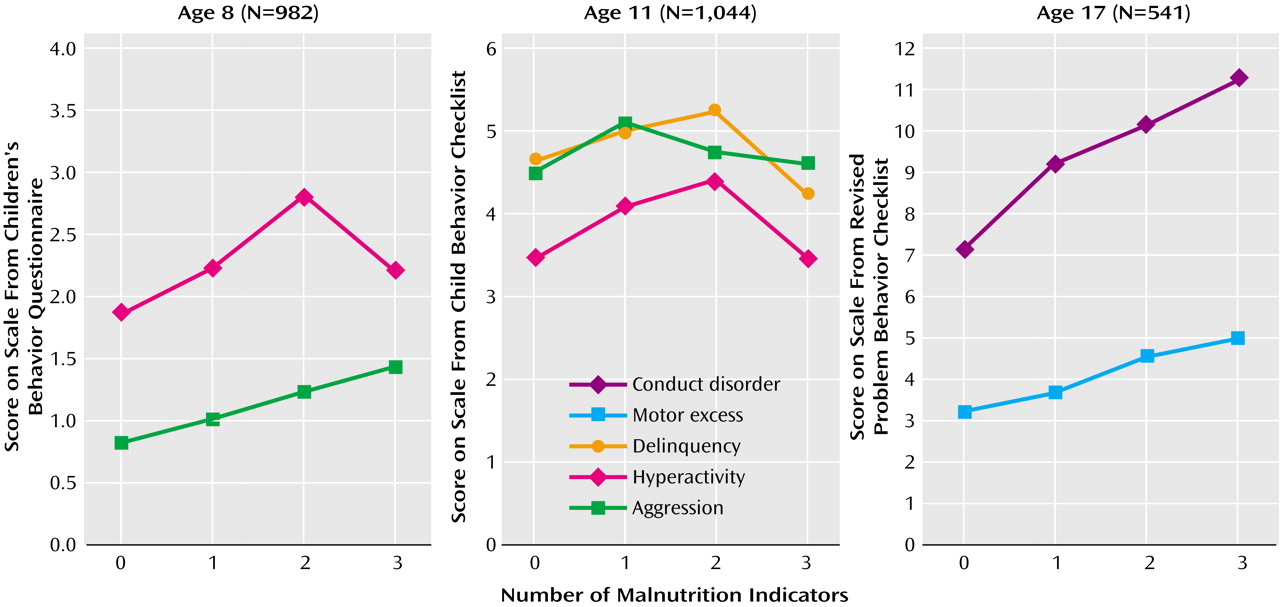Malnutrition at Age 3 Years and Externalizing Behavior Problems at Ages 8, 11, and 17 Years
Abstract
Method
Participants
Signs of Malnutrition at Age 3
Angular stomatitis
Hair dyspigmentation
Sparse, thin hair
Anemia
Definition of malnutrition
Intelligence and Cognitive Ability at Ages 3 and 11
Age 3
Age 11
Psychosocial Adversity at Ages 3 and 11
Externalizing Behavior Problems
Age 8
Age 11
Age 17
Representativeness of Groups
Statistical Analyses
Results
Externalizing Behavior Problems at Age 8
Effect of malnutrition
Mediators
Moderators
Externalizing Behavior Problems at Age 11
Effect of malnutrition
Mediators
Moderators
Externalizing Behavior Problems at Age 17
Effect of malnutrition
Mediators
Moderators
Dose-Response Relationships
Discussion
Key Findings
Nutrition, Brain Development, and Externalizing Behavior
Clinical Implications and Limitations





Footnote
References
Information & Authors
Information
Published In
History
Authors
Metrics & Citations
Metrics
Citations
Export Citations
If you have the appropriate software installed, you can download article citation data to the citation manager of your choice. Simply select your manager software from the list below and click Download.
For more information or tips please see 'Downloading to a citation manager' in the Help menu.
View Options
View options
PDF/EPUB
View PDF/EPUBGet Access
Login options
Already a subscriber? Access your subscription through your login credentials or your institution for full access to this article.
Personal login Institutional Login Open Athens loginNot a subscriber?
PsychiatryOnline subscription options offer access to the DSM-5-TR® library, books, journals, CME, and patient resources. This all-in-one virtual library provides psychiatrists and mental health professionals with key resources for diagnosis, treatment, research, and professional development.
Need more help? PsychiatryOnline Customer Service may be reached by emailing [email protected] or by calling 800-368-5777 (in the U.S.) or 703-907-7322 (outside the U.S.).

